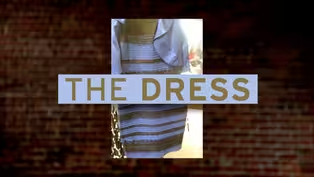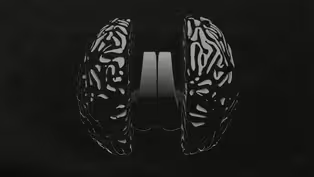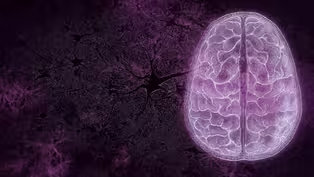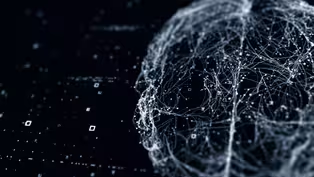
Is Pain Made in the Brain?
Clip: Season 50 Episode 9 | 3m 40sVideo has Closed Captions
This experiment shows how the brain can interpret — and misinterpret— pain.
In your hands, you have separate sensors for heat, cold, and pain. Here's what happens when you touch something hot and cold at the same time.
Problems playing video? | Closed Captioning Feedback
Problems playing video? | Closed Captioning Feedback
National Corporate funding for NOVA is provided by Carlisle Companies and Viking Cruises. Major funding for NOVA is provided by the NOVA Science Trust, the Corporation for Public Broadcasting, and PBS viewers.

Is Pain Made in the Brain?
Clip: Season 50 Episode 9 | 3m 40sVideo has Closed Captions
In your hands, you have separate sensors for heat, cold, and pain. Here's what happens when you touch something hot and cold at the same time.
Problems playing video? | Closed Captioning Feedback
How to Watch NOVA
NOVA is available to stream on pbs.org and the free PBS App, available on iPhone, Apple TV, Android TV, Android smartphones, Amazon Fire TV, Amazon Fire Tablet, Roku, Samsung Smart TV, and Vizio.
Buy Now

NOVA Labs
NOVA Labs is a free digital platform that engages teens and lifelong learners in games and interactives that foster authentic scientific exploration. Participants take part in real-world investigations by visualizing, analyzing, and playing with the same data that scientists use.Providing Support for PBS.org
Learn Moreabout PBS online sponsorship- [Heather] To keep us alive, the brain has evolved to look for signals of potential danger.
One of the most important is pain.
And as neuroscientist Theanne Griffith is about to show me, sometimes that can be a kind of illusion as well.
So what is this?
- [Theanne] This is a thermal grill.
- [Heather] Okay.
- This is a machine that could give us some insight as to how pain works in your brain.
- All right.
This is making me nervous already as I'm getting strapped in.
(Theanne laughing) - [Theanne] Don't worry.
It's all an illusion, actually.
- Okay.
- And it's comprised of these different metal bars that are either set to a cold or warm temperature.
So why don't you go ahead and touch that first bar.
It's warm, right?
And then the next bar.
Cold.
(Heather humming) And then the next one, warm.
You see?
So they're alternating cold, warm, cold, warm.
(Heather humming) Now you wanna see what happens when you put your hand down.
- Not necessarily.
(Theanne and Heather laughing) - Go ahead.
- Okay.
Okay, here we go.
Ow!
- [Theanne] Right?
Isn't that interesting?
- Whoa.
Yeah.
What is going on there?
It sort of feels cold at first, but then- - Then it gets this kind of burning sensation, right?
- Yes, very much so.
It feels super hot, like I'm getting burnt.
- So it's not a hundred percent clear exactly how this is happening, but what we think might be going on is that basically your brain is getting a little bit confused, - Okay.
- It's feeling cold, and it's also feeling warmth.
And somehow it's interpreting these two signals as pain.
(curious music) - [Heather] Here's what neuroscientists think is going on.
In your hands, you have separate sensors for heat, cold, and pain.
Normally when you touch something slightly cold, both your cold and pain sensors are activated, but the cold ones override the signals from the pain sensors, telling your brain there's nothing to worry about.
Unless, in this very unnatural scenario with the thermal grill, you happen to be touching something warm at the same time.
Here, the heat signals cancel out the cold ones, leaving you with just the pain ones activated, telling your brain, ouch!
So in that respect, is pain real or is it just an illusion or a construct of the brain?
- That's a really good question.
So noxious stimuli is a real thing, right?
If you stick your hand in boiling water, that's an aversive stimulus.
The perception of a noxious stimuli is real.
Pain is more of a construct, right?
And it can vary from individual to individual.
(curious music) - Pain is a construct of the brain.
How do we know that?
You touch a needle, right, and prick your finger, we can draw the anatomy of what just happened.
We have very well-defined pathways saying this is pain information.
We don't interpret it as pain until it hits your brain.
- [Heather] Pain, not unlike the experience of color, is a construct of the mind.
(toddler babbling) But just because pain is in your brain doesn't make it any less critical for survival.
- [Theanne] Pain is a very important learning mechanism for children.
They learn what behaviors they can engage in that are safe, and what behaviors will they should not engage in because they could cause them bodily harm.
And there's different mutations that people can have in certain proteins that make them completely insensitive to pain.
And so kids do things like bite on their lips or on their fingers when they're very young, and as they get older, can engage in risky behavior.
So pain is extremely important for us to feel.
How Your Brain Interprets Color
Video has Closed Captions
Clip: S50 Ep9 | 2m 24s | A vision scientist breaks down the infamous dress debate. (2m 24s)
Is the Human Brain Actually Two Minds?
Video has Closed Captions
Clip: S50 Ep9 | 5m 17s | Severing the connection between the two halves of the brain reveals how the hemispheres function. (5m 17s)
Your Brain: Perception Deception Preview
Video has Closed Captions
Preview: S50 Ep9 | 29s | Neuroscientists discover the tricks and shortcuts the brain takes to help us survive. (29s)
Your Memories Are Not as True as You Think
Video has Closed Captions
Clip: S50 Ep9 | 3m 51s | It turns out memories have a very shaky foundation. (3m 51s)
Providing Support for PBS.org
Learn Moreabout PBS online sponsorship
- Science and Nature

Capturing the splendor of the natural world, from the African plains to the Antarctic ice.













Support for PBS provided by:
National Corporate funding for NOVA is provided by Carlisle Companies and Viking Cruises. Major funding for NOVA is provided by the NOVA Science Trust, the Corporation for Public Broadcasting, and PBS viewers.






